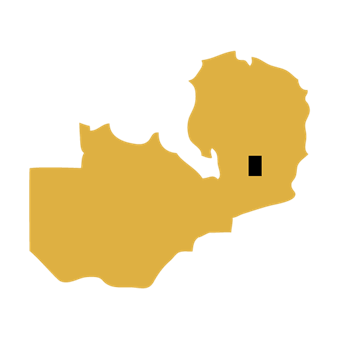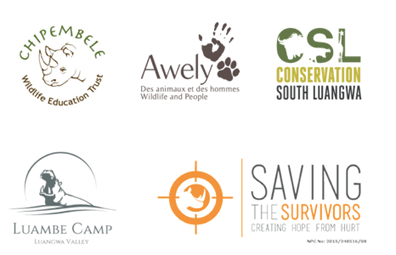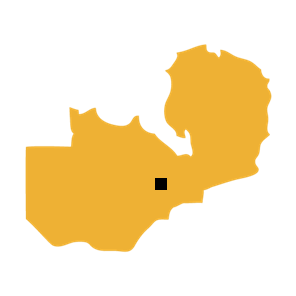

SPN in brief
Mission Statement
SPN!’s mandate is to stop the illegal trade of threatened and endangered species, the illegal trade of animal products, and the over-exploitation of endangered species in general. We work with partners on the ground to protect and rehabilitate animal populations threatened by poaching, and to educate children globally about the
dire consequences of this trade. Our mission is to inspire a social movement and ensure the long-term survival of vulnerable species.
Our Successes
Over our first three years, SPN raised $400,000.00 to support grassroots organizations’ ground efforts in Africa.
We also created a school assembly program first used in LA County schools from K-12 as well as in junior colleges. In 2017, our education program expanded globally to Africa. SPN’s assembly program
has now reached over 5,000 student and has introduced them to our beneficiaries on the ground. By using video streaming services, we enabled students to ask questions to these iconic conservationists and be inspired by them and their work.
We have also run a successful Youth Program, enabling and encourage young adults in our youth program to creatively express their determination to end the illegal wildlife trade through music, videos, and photography shared on social media.
Moving Forward
SPN will now take an even more active role in the conservation of species, as well as further expand our education program internationally to inform and inspire the next generation and create long term behavioral change.
We will work towards long-term, quantifiable conservation goals, at our conservation sites. We are expanding our school assembly program to include colleges and communities. We will take this
program across Asia and Africa to reach the people © IAPF 2017
where it is needed most.
I started this organization to stop the obliteration of our keystone species. Rhino, elephants and other endangered animals are rapidly disappearing from our planet and it is up to us whether or not to let it continue.
Without our keystone species, our ecosystems will dramatically change to the detriment of the planet. The flora and fauna that depend on them will continue to vanish, eventually eroding our soils and oxygen supply. Animals protect us far more than we protect them. Humans MUST unite and respond to this wake up
call.
It sounds ominous, but this situation is not beyond hope if we act NOW. On board to make a change? We have a plan that, if implemented on a global scale, could reverse the detrimental effects of poaching. PROTECT and EDUCATE. It’s that simple. Stop Poaching Now! funds those on the ground protecting what’s left of dwindling animal populations while giving us time to expand to eventually thousands of schools and educational institutions. In a few short years, we’ve already made a significant impact with our programs.
Our organization gives a voice to the voiceless and fights against the illegal poaching of our animals.
Thank you for helping us to go global with our message: STOP POACHING NOW!

Heidi Jo Markel
President, Stop Poaching Now
It’s an honor to be asked to be asked to join such a fantastic organization with such passion and drive to change the world for the better. I have come on board with one goal, to stop poaching as soon as possible.
I also plan to utilize my experience in conservation along with my organizational and management experience to best serve this organization. Over the last four months, I have been restructuring the charity to best achieve its overall goal to Stop Poaching Now! The charity will now be tackling both long and shortterm global solutions to the poaching problem.
The first focus being education. The only way poaching will stop long-term is for the demand for the products derived from poaching to cease. Whilst some
charities focus on mass content distribution to emotionally connect with millions, there is strong evidence to suggest that education, and the distribution of factual information, leads to longer-term behavioral and social change. We are working diligently to create a strong educational program that will be distributed to schools and communities in the U.S., U.K., China, Vietnam, Zambia, Zimbabwe and other southern African nations.
The second focus is conservation. Stopping demand and creating a long
-term behavioral and social change will take time, time that many of these endangered species just don’t have. We are setting up conservation projects focused on the conservation of specific species affected by poaching. The focus of these projects is to pull together smaller grassroots organizations to work together toward a common conservation goal. It is a two-pronged effort.
To begin with, we will focus on improving conservation infrastructure and
practices with an initial investment to start these changes. Secondly, we will help establish and improve tourism within the areas to work to ensure they have a source of financing to continue the conservation efforts long after we’re gone, leaving a legacy to be proud of. Together with your much needed support, we can have a meaningful and quantifiable impact on the conservation of endangered species, setting up sustainable conservation projects and educating society about the importance of our natural world.

Henry Barclay
VP of Operations, SPN
SPN has had a very successful first few years. Since we started in 2015 we have attracted like minded environmentalists and together have funded some truly inspirational projects to save Elephant and Rhino with the help of generous donors.
Driving SPN’s Education Program forward these last few years has been such a pleasure. Being able to inspire children first hand, giving them the chance to connect with people working on the ground to save these magnificent animals is such a privilege and I look forward to continuing our important work in the education and inspiration of children.
We’re looking forward to the journey ahead, further expanding our efforts to stop poaching in our lifetimes and to ensure the long term survival of not only Rhino, Elephant and Tiger, but all species affected by this terrible act. We rely on your support for the important work that we do and we can’t thank you enough for all that you give.

Sebastian Serrell-Watts
Executive Director, SPN
Our Successes
SPN has given much needed support to small grassroots organizations that aim to protect endangered species and end the poaching trade. By helping to fund ranger salaries, dog units, and vets, and by providing extended financial assistance to rhino orphanages and conservancies, SPN works tirelessly to guarantee that the animals we love and enjoy are there for our children. Our work extends beyond mere funding as we’ve broadened our education efforts to connect our conservation partners on the ground to children in Los Angeles. Through our assembly program, we Skype these partners into school assemblies, giving children the chance to ask questions and interact with these heroes of conservation. SPN now looks to fill a much needed gap in the fight against poaching, by extending beyond being just a supporter.
We aim to become a leader in this fight and bring together smaller organizations that can work together to better protect and defend endangered species. By working as a unified force, we can move faster and more efficiently towards this universal conservation goal. We work at ground level, uniting globally with schools and communities to inspire and educate children on the importance of topics like apex and keystone species and the effects animals like rhinos and elephants have on their ecosystems. We emphasize the negative environmental and economic impacts of diminishing population sizes, and we produce educational content for mass online consumption. We seek to educate and influence global populations, dignitaries, and political leaders. While we’re proud of the work and the successes we’ve had in the past, we’re excited to use it as a base from which to move forward into the new year and to continue to expand, doing our part to guarantee these species are around for generations to come.
Rangers Trained
Dogs
Rhino Orphan
Children Reached
Drones
2015-2017 Beneficiaries








Moving Forward
Conservation Program
We have set up 3 Species Projects that outline our conservation goals for each species in conjunction with conservation sites to help us protect one or more of these animals.
Each site pulls together many specialized grassroots organizations to create a focused, long term conservation effort. While we currently assist in funding these sites, we aim to make them self financing in the long run through the promotion of tourism. By assisting them in their move towards self-reliance, we guarantee the sustainability of these projects long after we’ve gone.
Education Program
Educating our society about the effects of poaching is key to stopping it. Since the creation of SPN, we’ve planned to expand our education efforts, and as we go into 2018, these plans are finally coming to fruition. We will now start producing online educational material in partnership with other academic contributors to provide current and factual content. We’ll also look to expand the reach of our school program to include more campuses and communities around LA and the world.
Through these programs, we bring the issues of poaching into the classroom, providing the next generation with the information they’ll need to join the fight.
Youth Program
We continue to support young adult members and encourage them to express themselves creatively in spreading poaching awareness.
Going forward, we plan to expand our Youth Program to universities and colleges. Present members will form their own youth groups across the U.S. and U.K., while we provide the support and guidance they need to organically grow their cause and spread their message.
The next generation is vital in the fight against poaching because they are the ones who will continue the fight. We are proud of our Youth Program and are excited about its growth.
Our Conservation Program
Project Rhino
White Rhino Near Threatened
Black Rhino Critically Endangered
At the end of 2015 all 5 species or rhino together had a total global population of approximately 30,000. The southern white rhino is by far the largest population having made an astonishing rebound from under 100 individuals in the early 1900’s to between 19,000 and 21,000 in 2013. However, this population is starting to dwindle again with a 7,700% increase in rhino poaching in recent years.
The recent poaching epidemic has resulted in emergency relocations of rhino out of South Africa’s Kruger National Park (which is large and open making wildlife harder to protect) to more secure areas. Africa’s western black rhino was declared extinct in 2011 and it’s been suggested that if present rates of poaching persist rhino could go extinct within the next 20 years.
Project Rhino is one of three SPN species conservation initiatives, outlining SPN’s goals for rhino conservation. Rhino populations are being depleted and their range fragmented resulting in a phenomena called The Founder Effect (where the remaining smaller populations have lower genetic variance and viability). Project Rhino focuses primarily on connecting rhino populations and expanding their range to give them greater genetic variance to give them a greater chance of survival in the long term. Whilst also protecting them from poachers and revenge killings as a result of human-wildlife conflict to maintain and grow the present populations.
The differences between these two species is not as obvious as their names would imply. Though they are called black and white, both species are actually gray. Instead of color, the two are most distinguishable by their mouths. Black Rhinos’ lips are pointed, coming to a V at the center, whereas White Rhinos’ are flat, forming a square shape when viewed from the front.
These different shapes are a result of their different diets. Black Rhinos’ pointed mouths help them to feed on the bush and leaves of their environment while White Rhinos are better suited by their flat and square mouths as they graze upon the grassland.
Though their eating habits are different, they keep similar social systems. They form groups that can contain up to several dozens of individual rhino, most of which are females and their young calves. These groups can expand to occupy a range of up to seven times that of their male counterparts, who prefer to linger and protect their own smaller territories.
Whatever the size of their domain, these animals are universally restrained by their poor sight which nature balances with a keen sense of smell and hearing. They can even find one another through the scents each one leaves behind as they travel the savannah.
With only a fraction of their species surviving into the 21st century, rhinos need our help more than ever.
Project Goals

Expand Species Range

Expand Protected Range

Decrease Human – Wildlife Conflict
Project Elephant
African Elephant Vulnerable
The African Elephant is a remarkable species. Known for their long lives and memories that span generations, they are the largest animal to walk the Earth today. Their hide can reach several inches thick and their tusks can expand several feet long. They use their trunk to handle objects and communicate, and their large ears help them radiate excess heat. They are truly remarkable creatures.
African Elephants are made up of two groups: the Savanna Elephant and the Forest Elephant. Savanna Elephants are larger and their tusks curve outwards while Forest Elephants are smaller and darker with tusks that are straighter and pointed downward. There is general consensus amongst taxonomists that the two are distinct species. However, the official classification is yet to be made.
While African Elephants for the most part have no natural predators, a lion pride will, on the rare occasion, take on a fully grown adult. On the contrary, young elephant calves without their mothers can make for an easy kill. They tend therefore to stick in matriarchal herds with adult male bulls tending to roam on their own.
These animals’ size is misleading. Despite weighing anywhere from 6-13 thousand pounds, these giant creatures are gentle by nature, making them an easy target for those wishing to sell their tusks on the black market.
African Elephants have been hit hard by severe habitat loss and poaching for ivory and trophies since the early 1900s. In the decade between 1979 and 1989 elephant populations halved, then between 2002 and 2011 Central African forest Elephant populations reduced by as much as 62%. It’s thought that these forest populations suffered the worst as they were the hardest to monitor and protect. After the steep decline in those populations poachers had to look elsewhere resulting in the death of 100,000 Elephants on the Eastern African Savannahs between 2010 and 2012.
In total, since the early 1900s African Elephant populations have decreased from as many as 3-5 million to approximately just 415,000. These remaining Elephant populations are hard to protect with just 30% of their habitat under formal protection. It’s estimated that 75% of Elephant populations are in decline resulting in total yearly population losses of 6.8%.
Project Elephant is one of three SPN species conservation initiatives, outlining SPN’s goals for elephant conservation. Elephant populations similar to rhino populations are being depleted at an alarming rate and their range fragmented Project Elephant therefore similarly focuses primarily on connecting elephant populations and expanding their range to give them greater genetic variance to give them a greater chance of survival in the long term. Whilst also protecting them from poachers and revenge killings as a result of human-wildlife conflict to maintain and grow the present populations.
Project Goals

Expand Species Range

Expand % of their Range that is protected

Decrease Human – Wildlife Conflict
Project Tiger
Sumatran Tiger Critically Endangered
The great tiger once spread across East Asia in populations of over 100,000 in the 19th century. Times have changed since then as human settlements and poachers have encroached on these areas.
The tiger population has dropped severely since then. It’s estimated that there are only 3,500 tigers left, occupying a paltry 18% of their previous habitat. There are now just 42 sites that house the vast majority of wild tigers in the world, acting as the last breeding grounds for this magnificent species.
Tigers are a huge poaching target. Nearly every part of their body from whiskers to tail can be sold on the black market, making them a lucrative addition to a poacher’s repertoire. Tigers play a large role in the traditional medicine practices of Asian countries, and possessing tiger products can be seen as a status symbol. As such, demand for these endangered creatures has continued, long into the modern age.
Tigers now have one of the highest averages of poaching, and it’s estimated that 150 tigers are killed per year.
The great tiger once spread across East Asia in populations of over 100,000 in the 19th century. Times have changed since then as human settlements and poachers have encroached on these areas. The tiger population has dropped severely since then. It’s estimated that there are only 3,500 tigers left, occupying a paltry 18% of their previous habitat. There are now just 42 sites that house the vast majority of wild tigers in the world, acting as the last breeding grounds for this magnificent species.
Tigers are a huge poaching target. Nearly every part of their body from whiskers to tail can be sold on the black market, making them a lucrative addition to a poacher’s repertoire. Tigers play a large role in the traditional medicine practices of Asian countries, and possessing tiger products can be seen as a status symbol. As such, demand for these endangered creatures has continued, long into the modern age. Tigers now have one of the highest averages of poaching, and it’s estimated that 150 tigers are killed per year.
Project Tiger outlines SPN’s goals for tiger conservation. Focusing primarily on increasing law enforcement to catch poachers with tiger products and shut down these illegal networks, as well as protecting the remaining 42 tiger population sites.
Project Goals

Decrease ease of trade

Expand % of their Range that is protected

Decrease Human – Wildlife Conflict
Site 1
Projects Rhino and Elephant
‘The Valley of Elephants’
Luangwa Valley, Zambia
Elephant Population
14,000 (100,000 in 1965)
Black Rhino Population
0 (6,000 in 1965)
Number of Visitors
18 lodges, 30,000 visitors / year
Local population
50,000
Aim of the project
To significantly reduce the high incidence of Elephant poaching in the Luangwa Valley and work towards a potential reintroduction of Black Rhino, expanding their species range by up to 4,000 km2.
Background
Spanning over 70,000 km2 of wildlife-managed land, the Luangwa Valley holds the vast majority of Zambia’s remaining elephants (14,000). Though once called ‘The Valley of The Elephants’, this ecosystem has been hard hit by poaching over the last 20 years, and a team of small non-profits are working to bring it back.
But they need our help! With our funding and support, we will be able to bring this Valley of Elephants back to its former glory.


Rhinos in care
34
Aim of the project
To provide funding to nurture and conserve orphaned Rhino for eventual reintroduction into the wild.
Background
The Care for Wild Rhino Sanctuary NPC was founded 15 years ago in the Limpopo province by Petronel Nieuwoudt with the goal of providing care and rehabilitation to a wide range of animals.
Currently, the sanctuary is transforming their rehabilitation center and additional land into a secure stronghold which will eventually accommodate 100 black and white rhinos in a viable, secure breeding range. Ultimately, it is the goal of the sanctuary to aid in the process of maximizing the rhino population with the intention of preserving the species for future generations.
Despite intense counter poaching efforts, rhinos continue to be poached at unprecedented levels throughout South Africa. Care for Wild Rhino Sanctuary NPC is developing a concise strategy to ensure the safety and security of the rhinos under the centers’ care, and is committed to maintaining the highest level of protection.


Site 2
Project Rhino
Rhino Sanctuary
Limpopo, South Africa
Elephants in care
6
Aim of the project
To provide funding, to nurture and to rehabilitate orphaned elephants for reintroduction into the wild. Orphaned elephants at Site 1 are intended for transfer to this elephant sanctuary where they are given another chance at life.
Background
While under two years of age, young elephants are incredibly vulnerable and dependent. Many do not survive without intricate care and nutrient rich milk from their mothers.
At the sanctuary, a team of locally employed, highly trained Keepers care for and watch over them constantly. Together with their new siblings and keepers, these young elephants learn to overcome the tragic loss of their natal family as they browse, play and bathe together in a natural environment.
As soon as the calves can be weaned from milk, they are moved to the Kafue National Park, to join other older orphaned elephants at the EOP Kafue Release Facility.



Site 3
Project Elephant
Elephant Sanctuary
Lusaka, Zambia
Our Education Program
Education Program
To Date
The only long-term solution to ending this terrible industry is for the demand for products derived from endangered species to disappear. After our founding, we quickly became aware of a significant lack of public knowledge around the issue. We took this as a sign to start in our own community in Los Angeles, creating an Education Program through which we have brought issues of poaching and animal exploitation to the forefront.
Founded in 2015, our Education Program began as a way to reach out to those in our local community and beyond. By combining our efforts and our resources, we were able to provide unique and innovative opportunities for the students and schools where we took our program.
The first step to fighting poaching is bringing awareness to the issue and to this end we partnered with 12 schools in the Los Angeles area as well as one in Botswana and one in South Africa to provide information about the fight and the ways students can help.
Our Education Program aims to move beyond simply providing information to students and communities. We provide them with the information and motivation to move towards true and lasting change.
Our program offers schools an assembly program, where students have the chance to video chat with our working conservation partners in Africa including rangers, veterinarians, and conservationists. It’s a multi-faceted approach in which students are not only given the chance to hear directly from someone working every day to defend these animals, but to also ask questions. By engaging students this way, we bring the conservation struggle against poaching, to them, removing it from some far away country and transplanting it into their classrooms.

Video chat with heroes of conservation

Assembly program
Education Program
Moving forward
The work we’ve done in our Educational Program since 2015 has laid the groundwork for the massive expansion we’re planning for the upcoming year. As students head back to school after the holiday, we’re working daily to provide them with complete, thorough, and factual educational material to use.
From 2018 onwards, we’ll be looking to expand across the U.S., U.K., China, Vietnam, Zambia, Zimbabwe, and Botswana to build a curriculum unique to each culture and location that teaches the importance of the natural world and the detrimental effect of poaching on the future of this planet. We plan to provide factual information that inspires change and gives students the knowledge they need to understand and affect the conservation crisis facing their own communities.
In this digital age, we are offered the opportunity to reach people all over the world that would otherwise be beyond our reach. We’re forming academic partnerships with educators and researchers across the globe to create online educational material that will provide online communities access to reliable, accurate and current content on the poaching crisis.
We can only stop poaching if we work together, both in our communities and globally. It is our belief that no one lacks the basic compassion or empathy for these animals. Instead, those who don’t help don’t know the extent of the problem or how they can end it. By providing resources and information through our Education Program and reaching out to those most affected by the crisis, we’ll begin the change. It’s up to the next generation to carry on this fight, and with our Education Program in place, they’ll be ready for whatever comes their way.

Developing online material with academic partners

Creating a curriculum for schools

Building a global program
Our Youth Program

Youth Program
Mention the Poachers got bad blood video, and wrote lyrics and recorded music video all on their own. Inside out project, jay walking
While we work to end the destruction that poaching currently brings to our ecosystems and the animals that populate them, our work is only as good as its long-term survival. These animals need to be protected today, tomorrow, and into the next generation if they have any hope of surviving for our children and grandchildren.
Our Youth Program is built around this belief, and it is one of our proudest accomplishments to date. Founded in 2015, dozens of teenagers from the community work together to learn about and spread awareness of the poaching crisis and its effects. The youth involved help bring the next generation into the fight against poaching. They create viral content and art to draw attention to the illegal and inhumane killing of endangered animals.
Those involved in the program create their own content with the help of the Stop Poaching Now! team. Through doing so, these teens have the opportunity to present the narrative in ways that appeal to both themselves and the rest of their generation. Projects range from volunteering and fundraising to staring in multimedia videos designed to highlight the realities of the poaching problem in new and engaging ways.
The Youth Program also gives a megaphone to the voices of young adults so their concerns about conservation are heard. Too often, the young are sidelined in these discussions when they are destined to be the future caretakers of the anti-poaching movement. We at Stop Poaching Now! believe it’s never too early to educate someone about these animals and the help and protection they need, and our Youth Program is an active and engaged part of our movement.
Our youth board is coming together to find like-minded individuals who have a passion for friendship, art, community, and the bettering of our world. Working together, they can help direct the conversation and bring these issues to the forefront of their generation’s goals and opinions.
Meeting once a month, the Youth Program remains an active program throughout the year that provides young adults with the chance to be active in their community and to make a change they can be proud of.
All those involved in the Youth Program are invaluable additions to our team who continue to grow and do good through their strong sense of community and commitment to stopping poaching in their lifetime.
Stories
Tale of a Field Vet
By Cheyenne Johnson
The wild is a dangerous place for animals. Extreme weather, aggressive animals, disease, and countless other threats linger in the background of their lives as they navigate the environment.
For the rhinos, elephants, and other large animals of Africa however there exists another threat: poachers. Since 2013, over 1,000 rhinos have been attacked and mutilated for their horns, and it’s a threat that’s only grown with demand.
These poaching attacks often leave the animals bleeding and weak, with gaping wounds that require long and extensive treatment. Luckily for them, Dr. Johan Marais is ready to help. As the founder of Saving the Survivors, an organization that works to help all endangered animals in need, Dr. Marais employs the care and expertise these animals need to survive poaching attacks.
Operating on wild animals can be tricky, and the animals aren’t known for their calm personalities. Bandages fall off as they move. Stitches snap. As a wildlife surgeon inside of Africa these past 10-12 years, Dr. Marais has learned through trial, error, and improvisation what will and won’t work with his animals.
“The difficulty of operating on large animal wildlife,” says Dr. Marais, “nobody understands that until you do it yourself.”
For Marais and his team, the fight to protect endangered animals is a war spanning multiple countries with many players and motivations. As Saving the Survivors aims to protect these animals, poachers hunt them down for profit and for the money to provide for their families, a reality Marais is not ignorant to.
The long term survivability and growth of these animals is a challenge that, as Marais puts it, “has no silver bullet.” The solutions will be multi-faceted, complicated, and long coming. It will require communities coming together and finding common ground where they believed there was none, but for Marais, there’s no question that it’s worth the effort.
“I’m 50 next year,” says Marais. “In 20 years time, when my daughter is in her 50s, when she says ‘what have you done to actually prevent the extinction of rhinos and elephants,’ I can turn to her and say this is what I’ve done. And that fuels me everyday.”
With over 200 animals saved in the organization’s care, the future of these animals already looks brighter.
Tale of a Ranger Dog
By Cheyenne Johnson
The dogs trained through Animals Saving Animals are not your normal house pet. These Belgian Malinois are handpicked and trained from their puppy days to be the best trackers and animal defenders possible.
“We want the thinking dog” said Daryll Pleasants, the chief dog trainer and founder at ASA. “We’re looking for courage rather than boldness.”
While the training is a long process that covers a range from how to behave under fire and in the presence of smoke grenades to how to search a vehicle and track across long distances, Pleasants’ own introduction to this world was a sudden one. While serving as a volunteer with a group of handlers, Pleasants witnessed a poaching incident.
“It sounds so corny when you say you have one of those life changing moments, but that’s the only way I can describe it really. I loved being over there, and I loved what I did, and it kind of felt like all those skills that I learned were all coming together in one place in one time.”
Those skills have been put to good use. Each dog teams apprehends an average of 2-3 poaching gangs a year, and the effect of stopping even one person can have a huge impact on poaching.
“Once we’ve apprehend a rhino gamer,” said Pleasants, “you’ll generally find that there’s a lull for about 6 months. It’s not like people think where these rhino poachers are locals. This is organized crime. You have four poachers. You have the tracker, the sniper, and then you have the two soldiers protecting. If they lose a member of their team through us, they may take up to 3 or 4 months to recruit and actually form a new syndicate.”
For Pleasants and his team, that’s 3 or 4 months to train, grow, and improve. It’s also 3-4 months where another rhino is alive and breathing because of their work.
The dogs grow and learn together with a handler who spend their time with the dog, developing a deep, trusting relationship. For the handlers, these dogs are a part of their family and Pleasants hopes they’re not the only ones who see the good these dogs can do.
For Pleasants, the immense and beneficial impact of the ASA teams has never been in question.
“When they actually catch their first gang,” said Pleasants, “and you know that it’s all been worth it…One gang captured is one rhino that’s still walking today. It’s one elephant that’s still walking today.”
Our Events and Projects
Our Events and Projects
E-Race
We were proud to support SPN partners and beneficiaries Damien Mander and Tony Fitzjohn through our main event of the year E-Race. Prior to a sit down dinner hosted at The Guild in West Hollywood, ‘Bill the Rhino’ was ridden around Los Angeles and then to Hollywood high school and the center for early education where Damien spoke to inspire the children there on the importance of our natural world.
The event was a huge success raising awareness, and much needed funds for work on the front line. Through our silent auction, and live auction we sold travel holidays and artwork with speeches from Damien Mander and Tony Fitzjohn highlighting the importance of their work.
Fashion Against Poaching
No animal should be slaughtered in pursuit of fashion, and too many people are unaware of this industry. In our commitment to spread awareness, SPN hosted the Fashion Against Poaching event in collaboration with Au Courant, a women’s fashion and accessories boutique in Los Angeles that specializes in ethically sourced and sustainable brands.
Fashion bloggers, designers, entrepreneurs, and trendsetters joined us for a night of celebrating Au Courant’s commitment to sustainability and educating ourselves on the work done and still to be done. Our Youth Program joined in on the event, selling raffle tickets and a variety of SPN clothing and accessories including jewelry produced by women in Africa. They also hosted a showing of their video, Poachers Got Bad Blood, which was written, produced, directed, and acted by Youth Program members.
Thank you so much to our sponsors Uncorked, Z palette, Summerland, and Shape House.
Winos for Rhinos
Throughout the 2017 holiday season, Yao Family Wines is offering our supporters the chance to buy bottles exclusively signed by Yao Ming. Only twelve were personally signed by the NBA star, and 20% of the proceeds go directly to SPN, helping to guarantee our work continues long into the future.
Additionally we commissioned our own SPN branded wine from Edna Valley with 100% of the proceeds going to our work to save species.
Poachers Got Bad Blood
Our Youth Program is one of our proudest achievements and this year they took it upon themselves to write, direct, and star in a video about the poaching crisis. Using the rhythm of Taylor Swift’s hit song, Bad Blood, members of the Youth Program led viewers through the realities of poaching and the detrimental effects it has on the animals targeted. The film was the first for our youth group and will not be the last.
Fashion Against Poaching
No animal should be slaughtered in pursuit of fashion, and too many people are unaware of this industry. In our commitment to spread awareness, SPN hosted the Fashion Against Poaching event in collaboration with Au Courant, a women’s fashion and accessories boutique in Los Angeles that specializes in ethically sourced and sustainable brands.
Fashion bloggers, designers, entrepreneurs, and trendsetters joined us for a night of celebrating Au Courant’s commitment to sustainability and educating ourselves on the work done and still to be done. Our Youth Program joined in on the event, selling raffle tickets and a variety of SPN clothing and accessories including jewelry produced by women in Africa. They also hosted a showing of their video, Poachers Got Bad Blood, which was written, produced, directed, and acted by Youth Program members.
The night was a great success and brought us one evening closer to keeping these animals protected and beautiful.
Thank you so much to our sponsors Uncorked, Z palette, Summerland, and Shape House.
Winos for Rhinos
Bringing an end to the poaching crisis is a group effort and we’ve partnered with famed basketball icon Yao Ming and Yao Family Wines to bring some holiday cheer to the fight. Throughout the 2017 holiday season, Yao Family Wines is offering our supporters the chance to buy bottles exclusively signed by Yao Ming. Only twelve were personally signed by the NBA star, and 20% of the proceeds go directly to SPN, helping to guarantee our work continues long into the future.
Additionally we commissioned our own SPN branded wine from Edna valley with 100% of the proceeds going to our work to save species.
Ride for Rhinos
A fit mind and body are necessities for our rangers on the ground. It keeps them focused, able, and active, and at SPN we aim to reflect the commitment of our heroes of conservation. In collaboration with Flywheel Los Angeles, our volunteers, staff, donors, and supporters came together for a morning ride. Through the pedaling and sweat, we raised funds for conservation efforts in Africa where poachers prey on those who can’t run away fast enough.
Poachers Got Bad Blood
Our Youth Program is one of our proudest achievements and this year they took it upon themselves to write, direct, and star in a video about the poaching crisis. Using the rhythm of Taylor Swift’s hit song, Bad Blood, members of the Youth Program led viewers through the realities of poaching and the detrimental effects it has on the animals targeted. The film was the first for our youth group and will not be the last.
Our Events and Projects




Join The Fight
Join The Fight
How You Can Help
Defending these animals takes time and money. Rangers, conservationists, educators and medical practitioners on the ground do what they can day in and day out, but they need our support to be able to ensure the survival of these endangered species.
When you make a donation or volunteer your time to help bring awareness, you can be confident that you’re helping an organization that is committed to the preservation of these species and the complete and total stop to poaching. Your actions are directly affecting the success of our conservation partners and support the hard but unbelievably rewarding work they do every single day.
If you’re ready to end poaching and join in the fight, there are several ways you can help.
Donate
Protecting these animals does not come without a financial cost. We rely on donations to fund these efforts and to give those we support the freedom to focus on conservation. You can sign up for a regular monthly donation that makes you an invaluable member of our community and adds your voice to the fight.
Volunteer
As we grow and expand, we’re always looking for motivated and committed individuals who want to help the cause. This can be on the ground in conservation or education or with your time at home, helping us with your expertise, be it marketing, PR, media, or finance.
Spread the Word
We can only fight the injustices we know about. As someone who’s aware of this problem and the steps that must be taken to stop it, you have the power every day to help these animals. By passing along this information, you can bring awareness and compassion to this fight.
As we wrap up December, we’re excited to work even harder next year, and with your support, we can stop poaching in our lifetimes.
For More Information Contact
Henry Barclay
Vp operations
hbarclay@stoppoaching-now.org
